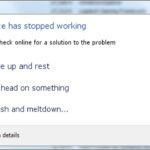Priming the fuel system on a Series 60 Detroit Diesel engine can be challenging. This guide provides a comprehensive approach to priming and troubleshooting common fuel system issues, focusing on the Series 60 Detroit Diesel Fuel Pump.
Fuel System Priming: A Step-by-Step Guide
Before priming, ensure fuel reaches the pump and rule out clogged or old fuel filters. Replace them if necessary and check for leaks in the fuel lines from the tanks to the fuel pump inlet. Any air leaks will hinder proper priming.
For a Detroit 60 series without a compu check fitting:
- Connect a pressure tank (capable of holding ~2 gallons of fuel and pressurized to 35-45 psi) to the fuel line connecting the fuel pump outlet to the cylinder head.
- Open the pressure tank valve to force fuel into the system, effectively priming it.
- Remove fuel tank caps to prevent pressure buildup if breathers are plugged.
For a Detroit 60 series with a compu check fitting:
- Connect the pressure tank to the compu check fitting.
- Crank the engine until it starts (usually within seconds).
If you lack a compu check fitting:
- Either obtain a female compu check fitting or remove the existing fitting and adapt a suitable connector for priming. Reinstall the original fitting afterward.
- Alternatively, disconnect the fuel outlet line to the cylinder head, connect the pressure tank, prime the system, and then reconnect the line. Remember to remove fuel tank caps.
Example: A typical fuel system diagram highlighting key components.
Troubleshooting Common Fuel System Problems with a Pressure Tank
A fuel pressure tank is invaluable for diagnosing fuel system issues. Here’s how to pressure test the system:
- Connect the pressure tank as described in the priming process (excluding the compu check method).
- Prime the system.
- Disconnect the return line and plug the outlet fitting at the cylinder head.
- Pressurize the system using the fuel pressure tank. Monitor the gauge for pressure drops, indicating leaks in the cylinder head, injectors, or injector cups.
Identifying and Addressing Fuel Leaks
If the pressure drops and you suspect internal leaks:
- External Leaks: Visually inspect for fuel leaks around injectors and solenoid bodies.
- Internal Leaks (Injectors): With the return line reconnected, clear the fuel gallery using air pressure from the empty pressure tank. Remove injectors, visually inspect for damage, and check for leaks by applying shop air to the nozzle while submerged in a bucket of water. Look for air bubbles. Also, examine the piston tops for excessive fuel, indicating a potential leaky injector.
Example: A damaged fuel injector that could cause fuel leaks.
- Fuel in Oil: If fuel is present in the oil, and no external leaks or injector issues are found, the oil pan may need removal to inspect for leaks by pressurizing the fuel system and observing for fuel running down the cylinder walls.
Other Causes of Fuel System Issues
Consider these additional factors:
- Air in Fuel System: Check for air bubbles in the return line within the fuel tank.
- Fuel Filter Housing: Inspect for cracks or leaks in the filter base and ensure proper o-ring installation on see-through filters.
- Recent Repairs: Review any recent fuel system work for potential errors.
- Return Line Check Valve and Fuel Pump: A faulty check valve or fuel pump can cause prime loss, even if the engine runs fine after priming.
Conclusion
Systematically addressing these potential issues, combined with the proper use of a fuel pressure tank, simplifies diagnosing and resolving fuel system problems on a Series 60 Detroit Diesel engine. Remember to always prioritize safety and consult official service manuals for detailed procedures.

